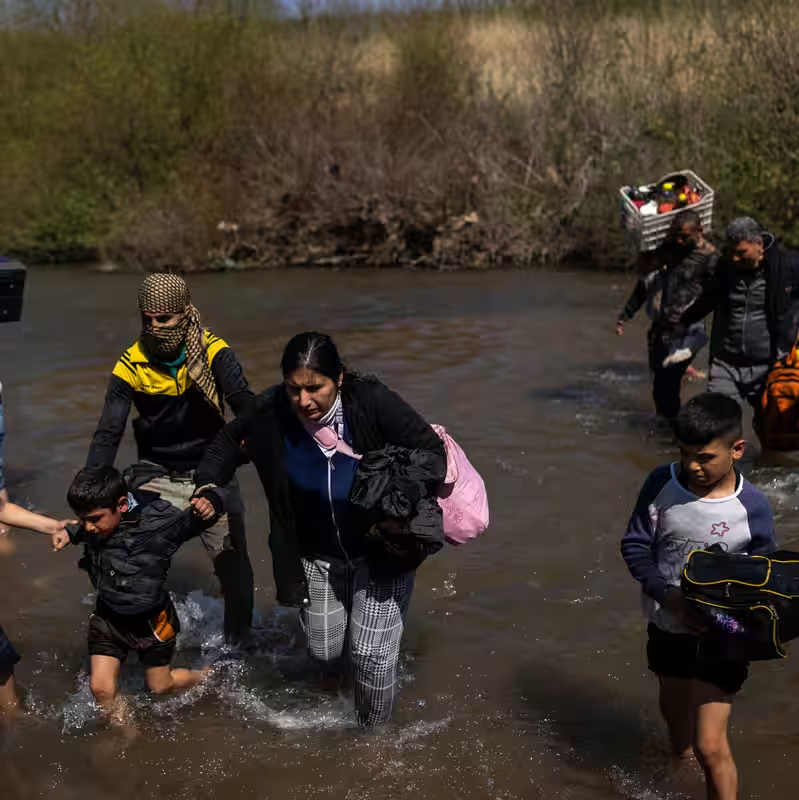Table of Contents
- A Fragile Peace, A New Displacement Crisis
- What’s Driving Syrians from Their Homes?
- Sectarian Violence Flares in Former War Zones
- Property Disputes Fuel Forced Evictions
- UN and Aid Groups Struggle to Keep Up
- Voices from the Ground: “We Have Nowhere Left to Go”
- Regional Impact and Refugee Spillover
- Sources
A Fragile Peace, A New Displacement Crisis
More than a year after Syria’s brutal civil war officially ended, the country is facing a new humanitarian emergency. According to the United Nations, over 400,000 Syrians have been newly displaced since late 2024—not by bombs or frontlines, but by a toxic mix of revenge attacks, sectarian reprisals, and bitter property disputes.
Syria’s so-called “transition” has proven anything but peaceful. In towns once hailed as liberated or stabilized, families are fleeing again—this time not from soldiers, but from neighbors.
What’s Driving Syrians from Their Homes?
Unlike wartime displacement, today’s exodus is decentralized and chaotic. The UN Office for the Coordination of Humanitarian Affairs (OCHA) identifies three main drivers:
- Sectarian violence: Retaliatory attacks against former regime supporters or minority groups.
- Acts of revenge: Local militias settling scores under the guise of “justice.”
- Property disputes: Conflicting claims over homes abandoned during the war, often enforced by armed groups.
Sectarian Violence Flares in Former War Zones
In Homs and parts of Idlib, returning Alawite families—long associated with Bashar al-Assad’s regime—have been targeted by Sunni-majority communities seeking retribution. In other areas, Kurdish residents face intimidation from Arab militias backed by regional actors.
“It’s not safe to go back, even if your house is standing,” said Fatima Khalaf, a mother of three now living in a tent camp near Aleppo. “They say the war is over, but for us, it just changed shape.”
Property Disputes Fuel Forced Evictions
During the 14-year conflict, millions of Syrians fled, leaving homes vacant. Now, new occupants—sometimes displaced themselves—refuse to leave. Without functioning courts or land registries, disputes turn violent.
In Damascus suburbs like Darayya, local councils issue “reconciliation certificates” that determine who can reclaim property. But these decisions are often arbitrary, favoring those with militia connections or cash to pay bribes.
“I showed my deed, my ID, photos of my children playing in that yard,” said Omar Rehman, a former schoolteacher. “They laughed and said, ‘The war erased your papers.’”
UN and Aid Groups Struggle to Keep Up
Aid agencies are overwhelmed. The UN estimates that 70% of newly displaced Syrians lack access to clean water, healthcare, or winter shelter. Funding shortfalls have forced cuts to food rations in camps across northern Syria.
“We’re treating symptoms, not causes,” said Lina Matar, a spokesperson for the International Rescue Committee. “People aren’t just homeless—they’re stateless in their own country.”
Voices from the Ground: “We Have Nowhere Left to Go”
Many displaced Syrians have moved multiple times. Some have returned to destroyed neighborhoods only to flee again within weeks. Others are stranded in informal settlements with no legal status.
“My parents buried their parents in this village,” said Youssef, 28, from a camp near Raqqa. “Now I can’t even visit their graves without fear.”
Regional Impact and Refugee Spillover
While most remain inside Syria, some are attempting dangerous journeys to Lebanon, Jordan, and Turkey—countries already straining under earlier refugee waves. Turkish authorities report a 30% increase in border crossings from Syria in 2025.
Analysts warn that without international pressure for accountability and property restitution, Syria’s displacement crisis will deepen—undermining any hope of lasting peace.
Sources
The New York Times: Syria’s Rocky Transition Brings New Waves of Displacement




